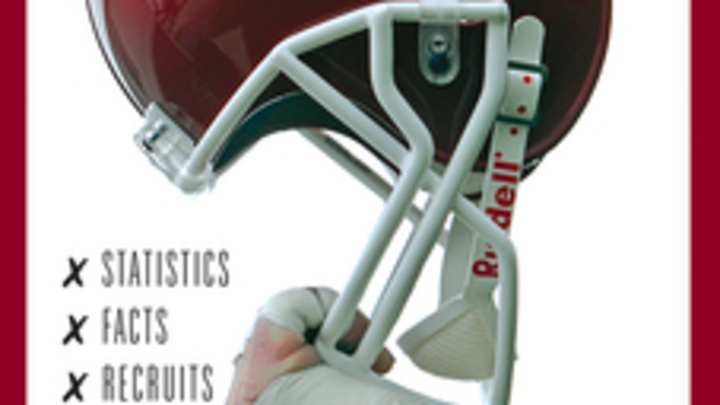Welcome to the Southeastern Conference, Oklahoma!

In winter months of 2009 (before Nick Saban won his first national championship at Alabama), ESPN’s Research Department decided to sink its teeth into the age-old question that has caused more discussions and fights in the college football world than any other, and it has nothing directly to do with the ongoing epic bowls vs. playoff debate.
Who’s No. 1?
In some parts of the United States, you’d find even more disagreement over that one question than about religion in the Middle East.
So, ESPN did what it seemingly always does, made lists, and tried to rank each Football Bowl Subdivision program in modern college football history. The Prestige Rankings were “a numerical method of ranking the best FBS college football programs since the 1936 season.”
(FYI, 1936 was the first year of the Associated Press poll).
Point values were assigned for various successes, and subtracted for failures. When everything was added up, calculated, checked, double-checked and examined by the World Wide Leader, one team stood out above all the rest.
It was Oklahoma.
“When you look at the big picture of college football since 1936, no program has achieved greatness as consistently as Oklahoma,” ESPN’s website stated. “We didn't even count the fact that Oklahoma owns the longest win streak in FBS history (47) or leads the nation with a .765 winning percentage since World War II. The 1956 Oklahoma team catapulted the Sooners past Notre Dame to the top of the Prestige Rankings, and it's been in the top spot ever since. OU’s seven national titles have spanned four decades. The Sooners have finished in the final poll’s top 5 an astounding 29 times. But the real fuel for OU's rise to the top of our rankings has been its conference dominance. The Sooners finished the regular season with at least a share of their conference’s best record a stunning 39 times, seven more than any other program in the country.”
Looking over the numbers, the Sooners made a pretty compelling case.
- Overall, Oklahoma’s winning percentage was an impressive .716.
- The Sooners had spent the most weeks ranked No. 1 in the AP poll (even more than Notre Dame by two).
- In the all-time AP poll, which the Southeastern Conference compiled every year based the same 25-to-1 point criteria as the weekly polls, Oklahoma had just passed Michigan for the top spot.
- OU had played in six of the previous seven Big 12 Championships Games and is tied with Southern California and Ohio State for the most BCS bowl appearances with seven. The BCS four title game appearances lead the nation.
Factor in 2008, when Oklahoma set an NCAA record by scoring at least 60 points in five straight games (and 1920 Cal was the last team to do it four times), it smashed Hawaii’s single-season scoring record of 656 points with 716, and quarterback Sam Bradford just won the Heisman Trophy as a sophomore, the Sooners were obviously one of the nation's elite programs.
What's changed since then? Not a lot with Oklahoma having won the last six Big 12 titles.
UNIVERSITY OF OKLAHOMA
Location: Norman, Oklahoma
Founded: 1890
Enrollment: 31,678 (21,768)
Nickname: Sooners
Colors: Crimson and cream
Mascot: The Sooner Schooner, pulled by horses “Boomer” and “Sooner.”
Stadium: Gaylord Family – Oklahoma Memorial (86,112).
Webite: SoonerSports.com
National Championships (7): 1950, 1955, 1956, 1974, 1975, 1985, 2000.
Conference Championships (49): 1915, 1918, 1920, 1938, 1943, 1944, 1946, 1947, 1948, 1949, 1950, 1951, 1952, 1953, 1954, 1955, 1956, 1957, 1958, 1959, 1962, 1967, 1968, 1973, 1974, 1975, 1976, 1977, 1978, 1979, 1980, 1984, 1985, 1986, 1987, 2000, 2002, 2004, 2006, 2007, 2008, 2010, 2012, 2015, 2016, 2017, 2018, 2019, 2020
Bowl appearances: 54 (30–23–1).
First season: 1895.
Parts of this post originated from the book, Huddle Up: Oklahoma Football. This is the first story in a series that will examine the history of the Sooners football program, and what it will bring to the SEC.

Christopher Walsh is the founder and publisher of Alabama Crimson Tide On SI, which first published as BamaCentral in 2018, and is also the publisher of the Boston College, Missouri and Vanderbilt sites . He's covered the Crimson Tide since 2004 and is the author of 27 books including “100 Things Crimson Tide Fans Should Know and Do Before They Die” and “Nick Saban vs. College Football.” He's an eight-time honoree of Football Writers Association of America awards and three-time winner of the Herby Kirby Memorial Award, the Alabama Sports Writers Association’s highest writing honor for story of the year. In 2022, he was named one of the 50 Legends of the ASWA. Previous beats include the Green Bay Packers, Arizona Cardinals and Tampa Bay Buccaneers, along with Major League Baseball’s Arizona Diamondbacks. Originally from Minnesota and a graduate of the University of New Hampshire, he currently resides in Tuscaloosa.
Follow BamaCentral